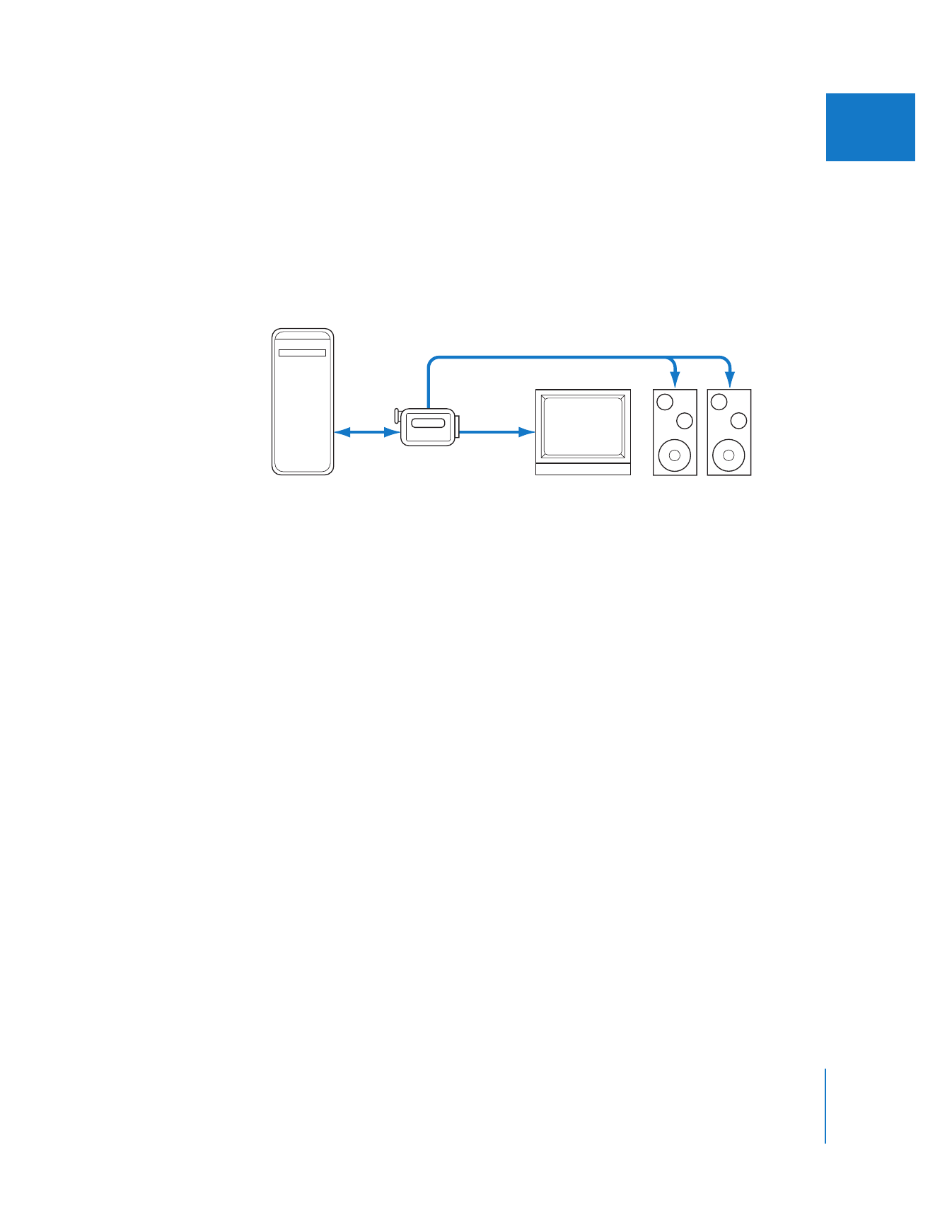
Consumer Video Monitors Versus Broadcast Monitors
Throughout the Final Cut Pro 6 User Manual, a distinction is made between “video
monitors” and “broadcast monitors.” This is to differentiate between cases when any
video monitor will do and cases when only a high-quality broadcast monitor is
appropriate for a given task.
In most cases, when you want to simply monitor your video signal as it will look to
the audience, any standard NTSC or PAL video monitor is appropriate, and there are
many inexpensive models to choose from. When performing critical tasks such as
color correction, however, you should use a high-resolution broadcast monitor that
can be properly calibrated to display your signal consistently and accurately.
Broadcast monitors offer manual control over every aspect of the video signal being
displayed, including brightness, chroma, phase, and contrast. Additionally, broadcast
monitors can often display different parts of the signal using modes such as blue only
(only the blue gun traces the screen; the green and red guns are turned off ),
underscan, and H/V delay. Without these controls to accurately calibrate your
broadcast monitor’s display with the signal being output from your computer, you
run the risk of making bad color correction decisions based on an inaccurate view of
your program’s picture.
For more information on how to use the controls on a broadcast monitor to calibrate
your video signal, see Volume III, Chapter 26, “Measuring and Setting Video Levels.”

Chapter 14
External Video Monitoring
221
III